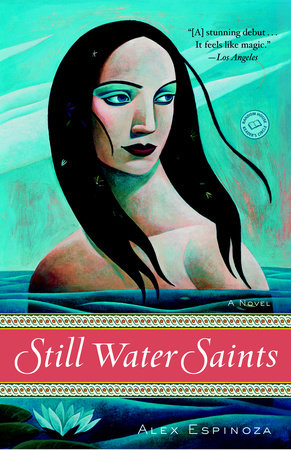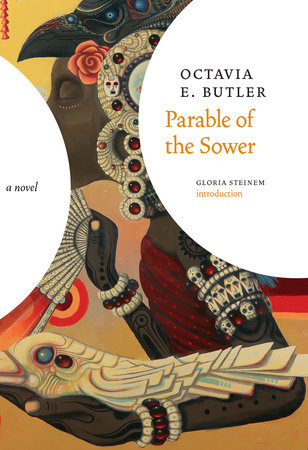Tom Waits grew up in southern California, and “Going West” is probably the most famous of his California songs (“Little brown sausages / lying in the sand. / I ain’t no extra, baby / I’m a leading man”). But there’s a great early riff, “Diamonds on My Windshield,” that puts you in the front seat with the young, aspiring musician, driving all over southern California at night, presumably from gig to gig:
So 101 don’t miss it
There’s rolling hills and concrete fields
And the broken line’s on your mind
The eights go east and the fives go north
And the merging nexus back and forth
You see your sign, cross the line, signaling with a blink“Diamonds on My Windshield” by Tom Waits
It could almost be another entry in the SNL series of sketches The Californians, what with the number of freeway references and city names he checks (“It’s these late nights and this freeway flying / It always makes me sing”). But there’s also a cast of characters and a noir mood that feel quintessentially of the region and of a certain time.
In writing a southern California noir, I came to realize: isn’t that one of the main pleasures they offer? Not the whodunnit but the excuse to hit the road: go to parts of town you don’t normally visit, talk to folks you maybe see but don’t understand, get behind the gate and knock on the rich guy’s door and check out his dirty laundry. Mystery novels are road novels, oftentimes, with moodier lighting.
There are the classic writers that get referenced when someone wants to introduce southern California’s place in literature—Chandler, Didion, Fante, West, Mosley, Ellroy, etc.—but if that’s your window onto our half of the state, there’s a lot you aren’t seeing. It’s like sticking to the freeways, instead of getting off onto some surface streets and fire roads. So here are a few idiosyncratic rest stops I’d recommend as you cruise the southland at night, trying to figure out how the hell you ended up at the end of the known world, with a front-row bucket seat and a sea-misted windshield as we hurtle toward the end of life on Earth.

Los Angeles, Part I: The Poetry of Wanda Coleman
There are so many writers on L.A. that choosing one is impossible, so I have to start with Wanda Coleman—not because we share a name—but because she gave voice in poem after poem to the many difficult aspects of life in southern California, deeply reflective of her experiences as a working class black woman. The language in her work is fiercely alive, wildly veering, containing a rich vein of multitudes. Take a look at “Requiem for a Nest,” which is as good as description of Los Angeles as one could hope for.

Inland Empire: Still Water Saints by Alex Espinoza
It’s easy, if you’re only thinking about television and film, to forget that California is mostly away from the coast: suburban, rural, agricultural, desert—places like the Inland Empire. The shifting demographics and economic realities of making it in California (as Woody sang, “If you ain’t go the do-re-mi, boys…”) mean the Inland Empire is dynamic, quickly changing.
For an immersion into ways of life in the IE, you couldn’t do better than Still Water Saints. Centered around a botánica in the fictional town of Agua Mansa, the people who turn to the shop’s owner, Perla, and her remedies for their troubles each give a window into different aspects of life, especially Latinx and queer experience, in Riverside and San Bernardino counties. A stunning, sensitively written book.

Newport Beach: The Barbarian Nurseries by Héctor Tobar
I lived in Orange County for a long time—behind the Orange Curtain, as we’d say—and I recently read The Barbarian Nurseries, which brought me back to and inside some of the complications of that world. It’s so bright, so brilliantly sunshine-filled and overdeveloped with glass and fake grass, that it might as well be a black hole and all that glitter the event horizon. In The Barbarian Nurseries, we see the area through the eyes of Araceli, the undocumented housekeeper who lives with Scott and Maureen Torres-Thompson, wealthy OC suburbanites, and their children. Sweeping and thorough, incisive about race and immigration and money, it’s also funny and human and beautifully told.

Pasadena: Parable of the Sower by Octavia E. Butler
In Parable, a climate apocalypse has wrecked Los Angeles, making communities more insular, more tribal, more openly racist. Violence is common to protect resources and fight off threats, neighbors. It’s so close to where we are you can taste it. Which makes it hard reading—or did for me, when I tried to read it again after the last election. But as most science fiction is really about the present, Butler has a lot to say about the southern California the book’s future is extrapolated from (she was from Pasadena), how unevenly that future—and our present—is distributed, and what it may take to envision and enact something better.

Hollywood: Walt Disney: The Triumph of the American Imagination by Neal Gabler
Disney is in the Southern California DNA, for better or worse, and Gabler’s biography—despite that “triumph” in the title—gives the better and the worse. The young man with an idea for what animation can be, slowly becoming an anti-union conservative stalwart and cultural icon who has a utopian vision for reshaping American life (the Experimental Prototype Community of Tomorrow, or EPCOT) left unrealized at the time of his death. He’s the blueprint for so many “visionary” men in California today, and the effect he had is hard to overestimate. (Don’t we all live in Disneyland now?). And yet I can’t read through the end without sobbing like a child, and I don’t exactly know why. That might be the most Californian contradiction I can think of.

Catalina Island: Catalina by Liska Jacobs
Elsa, the darkly charming protagonist of Catalina, enacts a road story of her own. She’s fled an upbringing in Bakersfield for a low-rung toehold in the New York art museum scene. When an affair with her senior curator boss goes south, she heads back home, then flees again to Santa Monica, at the end of her rope, before she goes a little farther still: to the titular tiny island off the coast (where Natalie Wood drowned, no less). Accompanied by prescription drugs and a few old friends (though “friend” is too strong by several degrees, and at the same time too simple), Elsa gives Jacobs room to make breathtakingly fresh and sharp observations about self-destruction, female anger, and the complexities of desire and pain.

Los Angeles, Part II: The Sympathizer by Viet Thanh Nguyen
So much has been said about this novel, I’m wary of just saying it all again—but if you’ve had too much coffee, and you’re driving around LA until four in the morning waiting to come down, the audiobook of The Sympathizer might be the perfect company. With its portrayal of a half-Vietnamese, half-French double-agent during and after the Vietnam War and his eventual relocation to a community of refugees in Los Angeles, the novel is big and alive and endlessly rewarding. It also will change the way you see the Vietnam war, and Hollywood’s role in shaping it into a narrative for white Americans, in a profound and, I’d hope, permanent way.

Compton (and Other Coastal Cities): The Sellout by Paul Beatty
Hilarious and dangerous—like hazardous to your health and mental well-being—The Sellout is perhaps the most Californian book on this list.
It’s got everything: police violence, segregation, urban change (and outright disappearance), but also the fading fame of a Little Rascal, sociology, a lot of weed, and surfing. Just when you think the novel has left nothing untouched by its sharp eye, it finds new room to move, like it’s a VW Bus that’s secretly a pop-top Vanagon with NOS, a roof rack, full kitchen, built-in cooler, exterior shower, and no privacy curtains.
At the time it came out, I’d been writing about San Diego surfer Evangelicals for a few years, but here was this very different narrator, talking about why he surfs Venice and Santa Monica: “No real reason. The waves were shit. Crowded. Except that every now and then I’d see another surfer of color. As opposed to Hermosa, Redondo, and Newport, which were much closer to Dickens, but the breaks were dominated by straight-edge Jesus freaks who kissed their crucifixes before every set and listened to conservative talk radio after the sessions.”
To exist in the same California as Paul Beatty!

Anaheim: A Scanner Darkly by Philip K. Dick
Philip K. Dick grew up in the Bay Area but spent the last ten years of his life in Orange County, living between Fullerton and Santa Ana and setting A Scanner Darkly in Anaheim—wildly hallucinatory, divinely touched years, which is oddly appropriate given the area’s support of both Disneyland and Crystal Cathedral (former broadcaster of The Hour of Power television show). In A Scanner Darkly, an undercover agent embeds with a house of addicts hooked on the drug “Substance D.” Self-dissociation, drug dependency, deception, recovery and the recovery industry all tangle, in a soulless, consumer-driven America. Okay. Sounds familiar enough. But it’s on loss and how institutions fail those they purportedly protect that A Scanner Darkly especially sings, and stings.

San Diego: Power of the Dog Series by Don Winslow
Across three books—Power of the Dog, The Cartel, and The Border—Winslow has created a crime fiction epic about the drug trade and the war on it, US policy and politics, and the lives on both sides of the border with Mexico. Okay, fine: it’s not all set in San Diego—the story goes from Washington, D.C, to South America, with stops between—but the San Diego/Tijuana region comes into play often enough. It’s massive, and grim, and there’s so much to absorb here about how we understand a place like this in a larger cross-border and global context.

Los Angeles, Part III: The Crying of Lot 49 by Thomas Pynchon
Oedipa Maas hits the road from northern California after her ex, the real estate mogul Pierce Inverarity, dies and she’s named in the will. She spends most of the novel piecing together elements of a conspiracy by driving around San Narciso (a fictionalized LA) in the mid-1960s. There are sleazy men, psychedelics, too much pop music energy, countercultural scheming—and Oedipa, a brilliant character on a mission to find meaning in a chaotic world but riding an uncertain, paranoid edge through the U.S. postal system. It’s gonzo, I know—but, as Bob Dylan once said, every word of it’s true, except the parts he made up. A good guide to southern California then, southern California now, and America for the foreseeable future.
Extra Miles: Farewell to Manzanar by Jeanne Wakasuki
Keep driving, technically just beyond the true border (whatever that means) between southern and northern California, and you’ll reach Manzanar. When I read this book about coming of age in the Japanese internment camp there during World War II, I was a kid, and I never expected that we’d need to read it as much as we do now. Concentration camps for children was once a part of the California story, the American story. They are again.
The post A Literary Road Trip through Southern California appeared first on Electric Literature.










